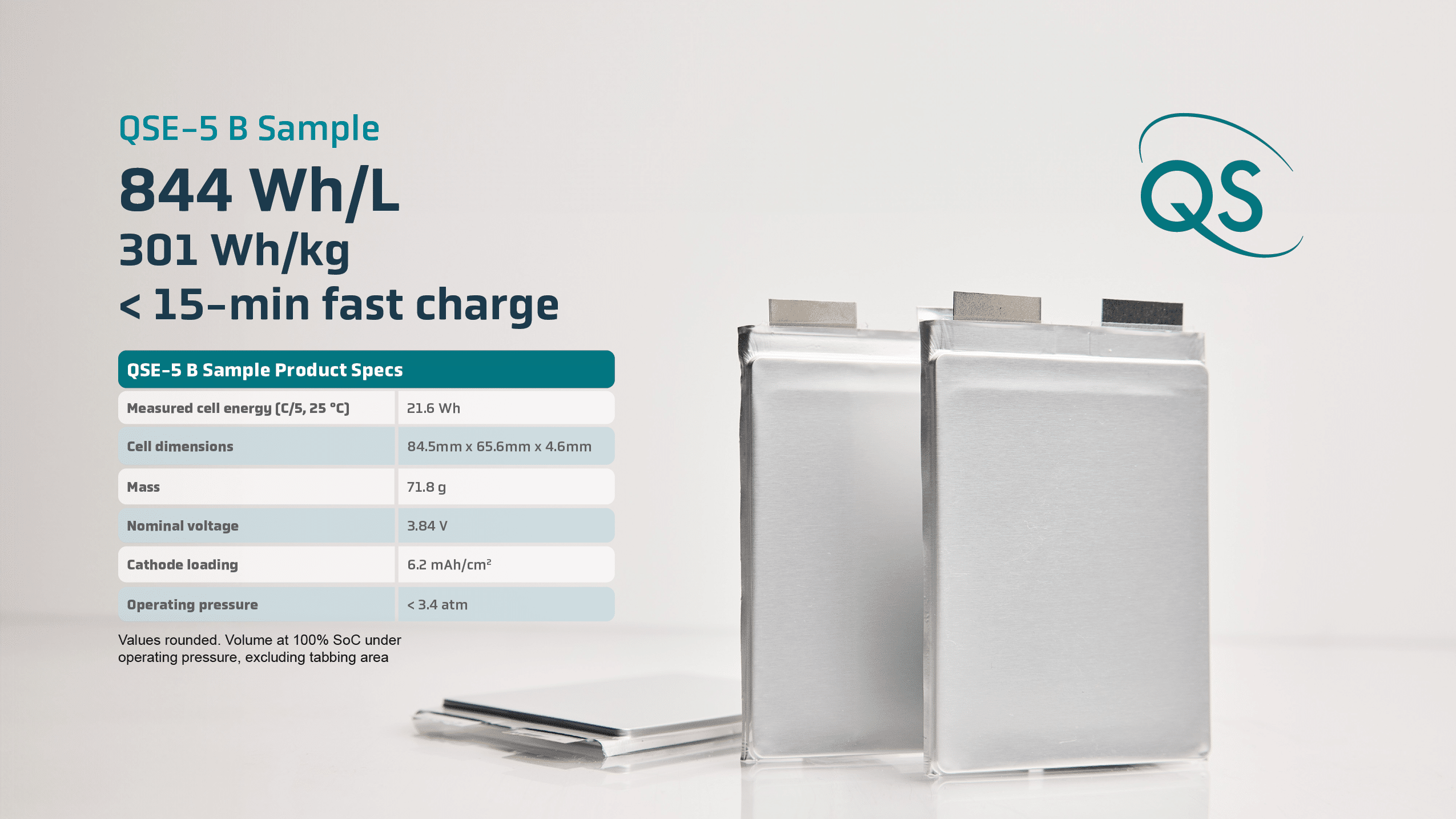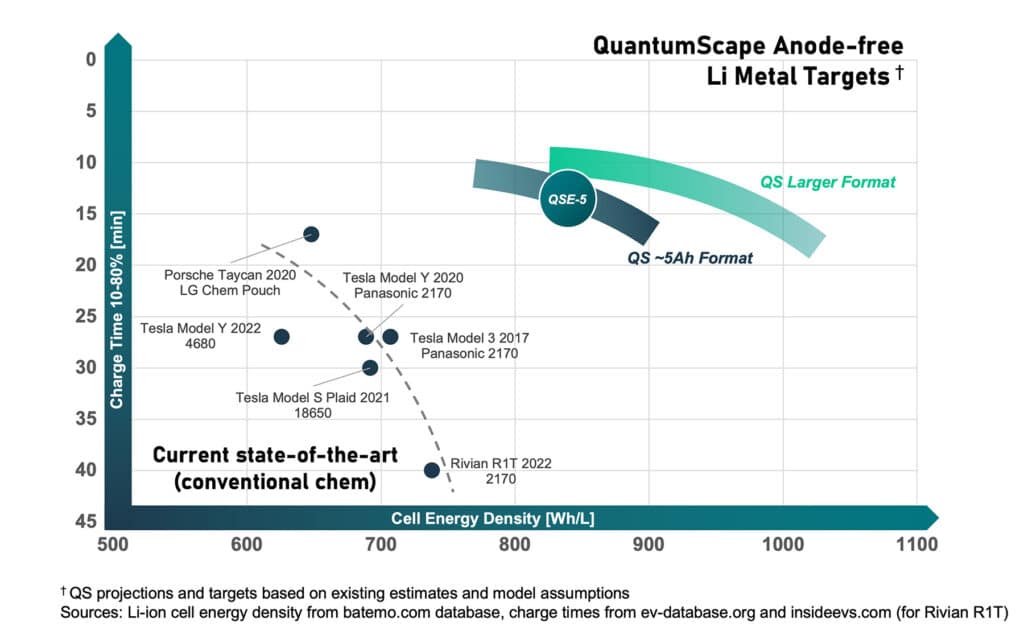A: Specific energy is the term physicists use to refer to gravimetric energy density, i.e., Wh/kg, whereas energy density is the term they use to refer to volumetric energy density. A cell with higher specific energy will save weight in the batteries themselves and provide additional weight savings in the battery system. Less weight in the car from a lighter battery system can then reduce chassis weight, tires, brakes, and more, which can improve vehicle performance and efficiency.
A cell with higher volumetric energy density will reduce the size of the modules and pack. This, too, has follow-on benefits at the system level, requiring fewer connectors and cables, and allowing for safe design of the vehicle with more room for crumple zones, as well more comfort with more room for passengers and cargo.
QuantumScape’s solid-state lithium-metal battery technology is designed to provide both high specific energy and high energy density.



